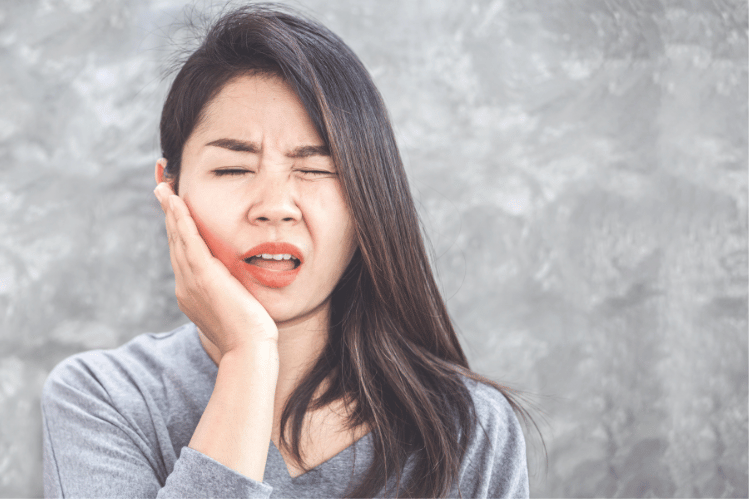
Orthodontics is a specialized field of dentistry that deals with the diagnosis, prevention, and treatment of dental and facial irregularities. Orthodontic treatment can improve the appearance of your smile, but it also has a significant impact on your oral health. Orthodontics can play a vital role in preventing dental decay and gum disease, which are two of the most common oral health problems faced by people of all ages.
Dental decay, also known as cavities, is caused by bacteria in the mouth that produce acid. This acid erodes the tooth enamel, leading to cavities. Gum disease, also known as periodontal disease, is caused by the buildup of plaque on the teeth and gums. Plaque is a sticky film of bacteria that can cause inflammation and infection in the gums, leading to periodontal disease.
Diseases Caused By Poor Orthodontics
It's important to note that poor orthodontic practices or neglecting orthodontic treatment can also cause several dental issues
Tooth decay: Crooked or misaligned teeth can make it difficult to clean between teeth and gums, leading to plaque and bacteria buildup. This buildup can eventually lead to tooth decay, which can cause pain, sensitivity, and even tooth loss.
Gum disease: Gum disease, or periodontal disease, is a chronic inflammatory condition that affects the gums and supporting structures of the teeth. Poor orthodontic practices can lead to an uneven distribution of pressure on the teeth and gums, which can cause gum recession and increase the risk of gum disease.
Temporomandibular joint (TMJ) disorder: Misaligned teeth and jaws can cause uneven pressure on the jaw joint, leading to TMJ disorder. Symptoms of TMJ disorder can include jaw pain, headaches, and difficulty chewing.
Speech problems: Misaligned teeth or jaws can also affect speech by causing a lisp or other speech impediments.
Orthodontics and Gum Disease Prevention
Orthodontics can help prevent dental decay and gum disease by correcting misaligned teeth and jaws, which can lead to several benefits, including:
Better oral hygiene: Crooked or crowded teeth can make it difficult to clean between teeth and gums, leading to a buildup of plaque and bacteria. By straightening teeth, orthodontic treatment can improve oral hygiene and reduce the risk of dental decay and gum disease.
Reduced pressure on teeth: Misaligned teeth can put excessive pressure on certain areas of the mouth, leading to enamel erosion and other dental problems. By aligning teeth and jaws, orthodontic treatment can distribute pressure evenly, reducing the risk of damage to teeth and gums.
Improved bite: A proper bite is essential for optimal oral health. Misaligned teeth can cause an uneven distribution of force when biting and chewing, leading to jaw pain and other dental problems. Orthodontic treatment can correct bite issues, leading to a more balanced distribution of force and improved oral health.
Reduced risk of injury: Misaligned teeth can also increase the risk of dental injury, particularly in sports or other high-impact activities. By correcting misaligned teeth, orthodontic treatment can reduce the risk of injury and protect the teeth and gums.
Improved overall health: Poor oral health has been linked to several health problems, including heart disease, diabetes, and respiratory infections. By improving oral health and reducing the risk of dental decay and gum disease, orthodontic treatment can also have a positive impact on overall health.
Oral Hygiene and Orthodontics:
Orthodontic treatment requires careful attention to oral hygiene. Braces and other orthodontic appliances can make it difficult to clean the teeth properly. Food particles and bacteria can become trapped in the brackets and wires, leading to dental decay and gum disease.
To prevent these problems, patients undergoing orthodontic treatment must be diligent about their oral hygiene. This includes brushing and flossing regularly, using mouthwash, and avoiding foods that can damage the braces or appliances.
Regular Dental Checkups:
Regular dental checkups are essential for maintaining good oral health, especially when undergoing orthodontic treatment. Your dentist can monitor the health of your teeth and gums, and make recommendations for improving your oral hygiene routine. Regular checkups can also help identify dental decay and gum disease early, allowing for prompt treatment.
Conclusion
In conclusion, orthodontics plays a crucial role in preventing dental decay and gum disease. Orthodontic treatment can correct malocclusion and misaligned teeth, improving oral hygiene and reducing the risk of dental decay and gum disease. Patients undergoing orthodontic treatment must be diligent about their oral hygiene and attend regular dental checkups to maintain good oral health.
FAQs
Can orthodontic treatment prevent gum disease?
Yes, orthodontic treatment can help prevent gum disease by properly aligning the teeth and reducing the risk of plaque buildup. Straight teeth are easier to clean, which reduces the likelihood of developing gum disease.
Is it necessary to wear a retainer after orthodontic treatment?
Yes, it is essential to wear a retainer after orthodontic treatment to maintain the results achieved during treatment. The teeth have a natural tendency to shift back into their original position, and a retainer helps prevent this from happening.
Can orthodontic treatment improve my overall appearance?
Yes, orthodontic treatment can improve your overall appearance by straightening your teeth and correcting bite issues. A straighter smile can boost your self-confidence and enhance your overall facial appearance.
Can orthodontic treatment be performed on adults?
Yes, orthodontic treatment can be performed on adults. In fact, an increasing number of adults are seeking orthodontic treatment to improve their oral health and appearance.

